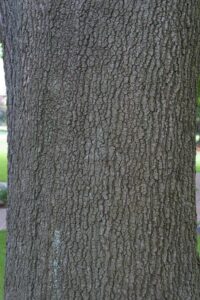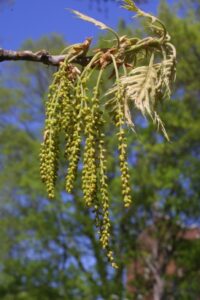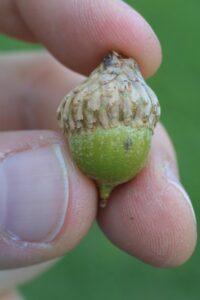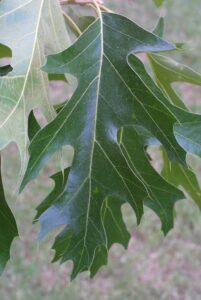Botanical Name:
Quercus velutina
Family Name:
Fagaceae / Beech
Description:
The black oak is a long-lived and slow-growing tree that produces acorns that provide important nutritional resources to wildlife. These trees have an irregular form and may look a bit unruly. It is not often found at garden stores due to an extremely long tap root that makes it hardy, but difficult to transplant.
Size:
60-80′
Habitat and Range:
The Black Oak is native and widespread in eastern and central North America. While this tree prefers rich soil, its seedlings will not survive in the shade, so it is often relegated to poor soils in native areas. This tree can be found on exposed slopes and ridges.
Attributes:
In early spring, velvety red leaves emerge from the winter buds. These leaves mature into glossy green leaves with 7-9 lobes. Spring also brings catkins, or slim cylindrical flower clusters without petals. Fall color ranges from a rusty red to orange-brown and the fruit of the tree: the acorn. The blackish outer bark of the tree is ridged in irregular blocks, but the inner bark is an attractive mustardy shade.
Wildlife Value:
While acorns are readily known as food for squirrels, the black oak is a full wildlife haven supporting birds, mammals, amphibians, reptiles, and insects. Resources include food, shelter from weather, and temporary or longer-term habitats. Leaves, twigs, and young shoots provide food for deer and rabbits. Many species of moth rely on the black oak as the sole food source for their caterpillar. The acorn is an important food item for over 100 animals including deer, opossums, foxes, ducks, bears, voles, and turkeys. Because the acorn is available and does not lose nutritional value in the late fall and into the winter, it provides necessary food for many animals over the food-scarce winter months. Some animals have even been known to change their movement pattern in response to particularly good acorn harvests.
Did you Know?
- The black oak’s common name refers to its nearly black bark. However, the inner bark is yellow or deep orange and is used to make a yellow dye called quercitron.
- The Latin name velutina is derived from the word vellus, meaning fleece, wool, or down. It refers to the species’ velvety winter buds and new leaves.
Benefits to Our Community (based on carbon dioxide sequestered, storm water runoff avoided, and air pollution removed each year):
Over the next 15 years, this tree will give back $4,440 worth of benefits to our community.




